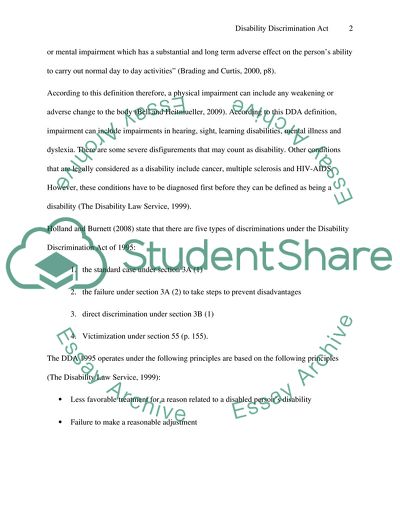Cite this document
(The Disability Discrimination Act in the UK Case Study, n.d.)
The Disability Discrimination Act in the UK Case Study. Retrieved from https://studentshare.org/law/1740542-the-development-of-the-law-on-disability-discrimination-since-the-enactment-of-the-disability-discrimination-act-dda-1995-has-resulted-in-a-complex-framework-of-protection-afforded-disabled-individuals-in-the-area-of-employment
The Disability Discrimination Act in the UK Case Study. Retrieved from https://studentshare.org/law/1740542-the-development-of-the-law-on-disability-discrimination-since-the-enactment-of-the-disability-discrimination-act-dda-1995-has-resulted-in-a-complex-framework-of-protection-afforded-disabled-individuals-in-the-area-of-employment
(The Disability Discrimination Act in the UK Case Study)
The Disability Discrimination Act in the UK Case Study. https://studentshare.org/law/1740542-the-development-of-the-law-on-disability-discrimination-since-the-enactment-of-the-disability-discrimination-act-dda-1995-has-resulted-in-a-complex-framework-of-protection-afforded-disabled-individuals-in-the-area-of-employment.
The Disability Discrimination Act in the UK Case Study. https://studentshare.org/law/1740542-the-development-of-the-law-on-disability-discrimination-since-the-enactment-of-the-disability-discrimination-act-dda-1995-has-resulted-in-a-complex-framework-of-protection-afforded-disabled-individuals-in-the-area-of-employment.
“The Disability Discrimination Act in the UK Case Study”, n.d. https://studentshare.org/law/1740542-the-development-of-the-law-on-disability-discrimination-since-the-enactment-of-the-disability-discrimination-act-dda-1995-has-resulted-in-a-complex-framework-of-protection-afforded-disabled-individuals-in-the-area-of-employment.


